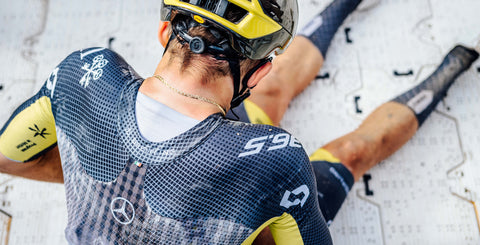Popeye ate cans full of spinach to get his iron. Although he might have chosen other products for a better effect, his intention was spot on. Iron is an essential mineral for everyone, and daily intake is crucial for preventing issues like anemia. For endurance athletes, iron plays an even more significant role in maintaining optimal performance. Read all about Popeye’s good intentions in this blog!
We only need a small amount of iron each day. This is essential for forming hemoglobin, a component of red blood cells. Red blood cells transport oxygen throughout our bodies. In addition, iron plays a role in energy production and supports a well-functioning immune system. The recommended daily intake varies from 11 mg per day for men to 16 mg per day for women. A deficiency can lead to reduced oxygen transport throughout the body, which may result in feelings of fatigue and low energy. In such cases, anemia could be the culprit.
We can naturally get iron from our diet, which exists in two forms: heme and non-heme iron. Heme iron is more easily absorbed by our body than non-heme iron. Heme iron is only found in animal products like meat and fish, particularly beef and lamb. Non-heme iron, on the other hand, is present in plant-based foods like whole grains, legumes, and green vegetables. Below is a table showing some examples of iron-rich foods.
|
Product |
Iron content (mg) |
|
1 serving of beef (100g) |
3.4 |
|
1 serving of chicken breast (100g) |
0.8 |
|
1 salted herring |
1.1 |
|
1 serving of tofu (100g) |
2.1 |
|
1 serving of cooked spinach |
1.7 |
|
1 handful of cashews |
1.7 |
|
1 slice of whole wheat bread| |
0.7 |
The recommended daily intake for women is higher, as they generally face a greater risk of iron deficiency. This is mainly due to blood loss during menstruation. Pregnancy and breastfeeding also increase iron requirements. Vegetarians need to pay extra attention to their iron intake as well, since they only consume the less readily absorbed non-heme iron. This increases their risk of developing an iron deficiency. Endurance athletes also fall into a higher-risk category for iron deficiency. Due to the body’s increased inflammatory response post-exercise, iron absorption is reduced in the hours following a workout. Additionally, long-distance runners face an added risk as the repetitive impact on their feet can damage red blood cells, requiring extra iron for recovery.
Athletes who train at high altitudes also have an increased need for iron. Due to the lower oxygen levels at high altitudes, the body produces more red blood cells to compensate. This natural reaction is why athletes train at altitude; an increase in red blood cells improves the body’s oxygen-carrying capacity, which translates to performance benefits at sea level in various endurance sports. To support the production of red blood cells, a higher iron intake is necessary. Start two weeks before your altitude training by taking 50 to 100 mg of iron (1-2 capsules of Amacx Iron) each day, ideally in the morning before breakfast, and continue until one week after returning to sea level. To optimize iron absorption, it’s best to avoid coffee, tea, and dairy products. Amacx Iron also includes a small amount of vitamin C, which enhances iron absorption in the body.
If you fall into one of the high-risk categories, it’s essential to check your blood levels regularly. If you do, aim to do so in the morning, well-hydrated, and ideally 12 to 24 hours after your last workout. The table below outlines scientific reference values for determining iron deficiency. If you fall into category 1, a daily capsule of Amacx Iron may help to improve your iron status. If you fall into categories 2 or 3, it's advisable to consult your doctor for a plan to address the deficiency.
Category |
Serum ferritin (ug/L) |
Hemoglobin concentration (g/L) |
Transferrin saturation (%) |
|
1 |
<35 |
>115 |
>16 |
|
2 |
<20 |
>115 |
<16 |
|
3 |
<12 |
<115 |
<16 |
In summary:
- Iron is a vital mineral for everyone, playing a significant role in oxygen transport through the bloodstream. For endurance athletes, this is especially important.
- Iron can be derived from our diet in two forms: heme and non-heme iron. Non-heme iron, found in plant-based foods, is less efficiently absorbed.
- Women, vegetarians, and endurance athletes are at a higher risk of iron deficiency, as they either lose more iron through blood loss or have reduced iron intake. For these groups, regular blood checks are especially important.
- Athletes training at high altitudes also require higher iron intake to support red blood cell production at altitude. Begin two weeks before altitude training and continue for a week after returning to sea level.
- If a blood test indicates an iron deficiency, Amacx Iron can help restore levels.
Iron is a small mineral with a big impact—make sure to keep yours in check!



